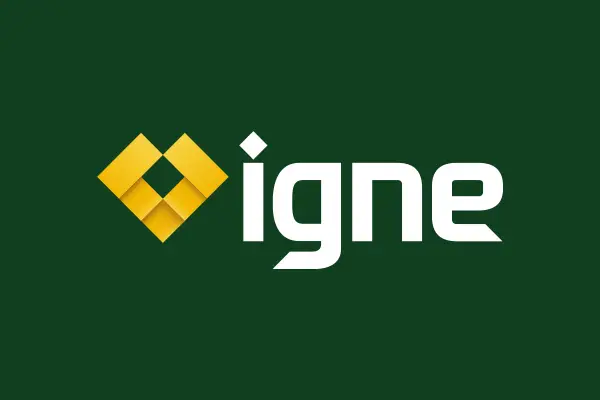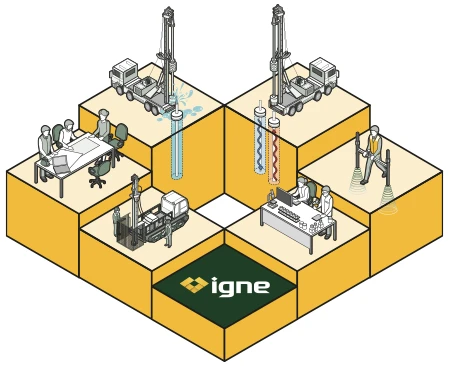

Foundation & Buried Obstructions GPR Surveys
Ground-related construction issues can be a significant financial drain, costing clients millions of pounds annually. To avoid such setbacks, Igne’s comprehensive ground penetrating radar (GPR) survey services provide a proactive solution.
About
What Are Foundation & Buried Obstructions Surveys?
Foundation and buried obstructions surveys are essential site investigations that use GPR technology to detect hidden features beneath the surface. These obstructions can vary from remnants of previous structures, such as old building foundations and pile caps, to natural elements like tree roots and animal setts, such as badger setts.
For projects involving foundations and buried obstructions, these surveys are critical in identifying unseen obstacles that could lead to costly delays or safety risks. From locating pile caps and tree roots to detecting building foundations and badger setts, Igne’s expertise in GPR surveys offers a reliable way to optimise your site investigations.
Detecting these obstacles before construction or excavation begins allows for more informed planning, reducing the risk of damage, delays, or additional costs
Igne’s foundation and buried obstructions surveys are part of a broader site investigation service designed to offer a clear, accurate understanding of what lies beneath the ground.
Our expert survey team utilises advanced GPR technology to generate precise data, helping clients address potential issues before they escalate.

Expertise
Why Choose Igne’s GPR Survey Services for Foundation & Buried Obstructions?
Choosing Igne’s GPR survey services is about more than just compliance or gaining a better understanding of ground conditions—it’s about ensuring the long-term success of your project.
Our expertise in GPR technology, combined with our diverse in-house resources, means we can deliver results that go beyond basic survey data. We provide in-depth analysis, robust reporting, and recommendations that help our clients de-risk projects at every stage, from planning through to completion.
Our surveys are ideal for those involved in construction, property development, or infrastructure projects who require certainty about what lies beneath the surface. Whether you are working on a new build, planning site clearance, or considering the impact of tree roots near existing structures, Igne’s GPR surveys provide the clarity and insight needed to move forward with confidence.
Additionally, Igne’s strong track record in the industry, supported by years of experience in geotechnical and environmental investigations, ensures that your project benefits from expert knowledge. When you work with us, you’ll receive detailed, actionable insights that can be integrated directly into your project planning.
Process
How Are Foundation & Buried Obstruction GPR Surveys Designed & Carried Out?
Foundation and buried obstruction GPR surveys are meticulously designed to meet the unique needs of each project. The planning process begins with an initial consultation to understand the site’s requirements, including any known historical or environmental factors.
Once the scope is defined, our team customises the survey to focus on the most relevant areas, such as zones suspected of containing pile caps, building foundations, badger setts, or tree roots.
On-site, our specialists use state-of-the-art GPR equipment to scan the subsurface. GPR emits high-frequency radio waves that penetrate the ground, reflecting back data when they encounter different materials. These reflections create a detailed picture of what lies below the surface, revealing buried obstructions that might otherwise go unnoticed.
After the survey is complete, the data is processed and analysed by our expert team, who produce comprehensive reports. These reports highlight the presence of any foundations, roots, setts, or other obstructions, providing clear recommendations for managing these findings.
The end result is a survey that gives you the knowledge and tools to proceed with your project safely and efficiently.
Benefits
The Benefits of Foundation & Buried Obstruction GPR Surveys
GPR surveys for foundation and buried obstructions offer a range of benefits, helping you identify critical elements like pile caps, building foundations, badger setts, and tree roots before they become problematic. Some of the key benefits include:
Increased Safety
detecting buried obstructions reduces the risk of accidents during excavation or construction, ensuring the safety of workers and equipment on-site.
Cost Savings
avoiding unexpected obstructions minimises costly delays and additional excavation or construction costs, helping you stay within budget.
Environmental Protection
dentifying features like tree roots and badger setts allows you to take steps to protect important ecological sites, ensuring your project complies with environmental regulations.
Optimised Planning
knowing the location of building foundations or pile caps ensures that your construction plans are fully informed, preventing structural issues and ensuring the longevity of your build.
Regulatory Compliance
many planning authorities require a thorough investigation of subsurface conditions. GPR surveys ensure that you meet these regulatory requirements, avoiding potential legal issues or delays.
Learn More
Frequently Asked Questions about Foundation & Buried Obstructions GPR Surveys
- What can GPR detect under the ground?
GPR can detect various materials and features, including concrete foundations, pile caps, tree roots, voids, buried utilities, and animal burrows like badger setts.
- How accurate are GPR surveys in locating buried obstructions?
GPR surveys are highly accurate when performed by experienced professionals. The technology can pinpoint the location, size, and depth of obstructions with precision, though factors like soil type and moisture content can influence the results.
- How long does a GPR survey take?
The duration of a GPR survey depends on the size and complexity of the site. However, most surveys can be completed within a day, with data analysis and reporting taking a few additional days.
- Can GPR surveys identify tree roots?
Yes, GPR surveys are capable of detecting tree roots. This is particularly useful when planning construction around existing trees, as it helps to avoid damaging the root system.
- Are GPR surveys safe for the environment?
GPR surveys are non-invasive and environmentally friendly. They do not disturb the ground or impact the surrounding ecosystem, making them a preferred method for ecological investigations
- Do I need a GPR survey before beginning construction?
While not always mandatory, commissioning a GPR survey before construction is highly recommended. It helps to identify potential obstructions that could cause delays, safety issues, or increased costs.
The Next Step
At Igne, we pride ourselves on offering expert GPR surveys.
We help de-risk your projects by providing a clear understanding of subsurface conditions.
If you need further information or wish to commission a foundation & buried obstruction survey, explore more about our specialist survey services today.
